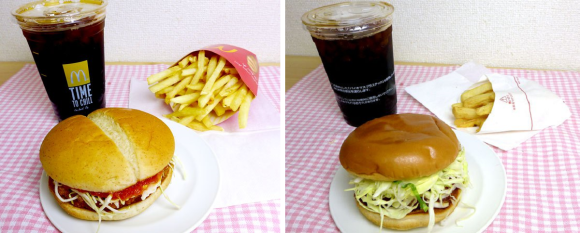
Here at RocketNews24, we’re all about forming stronger connections between Japan and the rest of the world. Incidentally, we’re also all about burgers and fried foods.
Sometimes, the planets align just right, and we get to check all three boxes at once, like we did today with our taste-test of McDonald’s new pork cutlet burger, a Westernized version of Japanese dish inspired by Western cuisine. And since the only thing better than a fried pork sandwich is two fried pork sandwiches, we’ll be comparing it to the nearly identical menu item from hometown hero Mos Burger.
First, a little background on what’s on our plates today. One of the most popular choices for a fortifying meal in Japan is tonkatsu – deep-fried pork cutlet (and not to be confused with tonkotsu, which is a pork bone-based broth used in some ramen dishes). While it’s now established itself as a traditional Japanese entre, tonkatsu was originally, like tempura, a take on deep-fried foods introduced by visiting Westerners. The “katsu” potion of the dish’s name is even a corrupted pronunciation of “cutlet.”
Tonkatsu is usually eaten with rice, but any number of restaurants and takeout joints in Japan also sell tonkatsu sandwiches, including domestic chain Mos Burger, where the roast katsu burger has been a popular menu item for years. McDonald’s isn’t willing to let Mos have the market to itself, though, and tossed its hat into the ring on May 7 with its new Tonkatsu McBurger.
Being extremely cheap individuals, we’d usually make a choice between the two based on which is less expensive. Of course, being equally gluttonous, we’ll also be needing some fries with our sandwiches, and here we run into a problem. McDonald’s charges 699 yen (US$6.85) for a tonkatsu burger combo that comes with a drink and fries, and Mos prices its similar set at 700. With just a single yen separating the two, we had no choice but to eat both and judge them on the basis of size and flavor.
Starting with the beverages, both sets come with medium soft drinks, and we couldn’t see a noticeable difference between their respective sizes.
Moving on to the fries, Mos’ are thicker, but also a whole lot fewer in number than McDonald’s spuds. By weight, the Golden Arches are 30 percent more generous here, so score one point for them.
Now, with the preliminaries out of the way, let’s start the main event. Tonkatsu burgers are pretty simple compared to ordinary beef-based burgers. There’s no sliced tomatoes or onions. You get the pork cutlet itself, some shredded cabbage, some sauce, and that’s all. Mos and McDonald’s both keep things orthodox by sticking to this short and sweet ingredient list.
▼ McDonalds (left) and Mos (right)
Here again, McDonald’s gives you more bang for your buck. The tonkatsu McBurger tips the scales at 163 grams (5.7 ounces), compared to the 152-gram Mos roast katsu burger. An 11-gram difference may seem like the sort of thing only aerospace engineers and drug dealers would get worked up over, but that should give you an idea of how seriously we take our fast food.
▼ McDonald’s heavyweight
▼ The svelte offering from Mos
Science hasn’t perfected zero-calorie deep-fried pork yet (and when it does, we’ll have finally achieved a utopia), so it’s no surprise that McDonald’s burger packs more calories, with the tallies for the two sandwiches being 414 and 369, respectively. Somehow a seven percent difference in weight balloons into 12 percent higher calorie count, but really, would you expect anything less from the king of American fast food?
Now that we were done crunching numbers, it was time to eat. We started with the new kid in town, McDonald’s Tonkatsu McBurger.
As we moved in for a bite, we suddenly became aware of a familiar scent. We’re guessing that McDonald’s cooks their tonkatsu in the same type of oil it uses for it French fries and fillet o’ fish, because it smells just like them. We could see this being a disappointment for those who are looking for a completely new experience, but long-time McDonald’s fans should feel right at home.
The cutlet’s breading is crispy, and the sauce tastes like a sweeter version of what you’d get with an order of chicken McNuggets.
Mos’ tonkatsu burger has a lot more shredded cabbage, which helps explain its lower calories to weight ratio. It also keeps its sauce between the cutlet and the veggies, giving it a cleaner appearance overall.
While the tonkatsu McBurger is unmistakably a McDonald’s sandwich, there’s nothing about Mos’ sandwich that immediately gives away its origins, with the possible exception of the fluffy bun that’s the same as that used for the chain’s ordinary hamburgers.
The sauce is less tangy and thus more in line with what you’d get if you ordered a pork cutlet with rice in a more traditionally Japanese restaurant. The breading also isn’t as crispy as the tonkatsu McBurger’s.
In the end, it’s hard to call a winner one way or another, as both sandwiches are tasty in their own right. If you’re looking to get the most food for your yen, or if you just can’t get enough of McDonald’s, we doubt you’ll be disappointed with the chain’s new sandwich. On the other hand, if the smell of McDonald’s oil takes you back to unpleasant memories of being a part-time teenage fry cook, Mos has got you covered.
Photos: RocketNews24
[ Read in Japanese ]


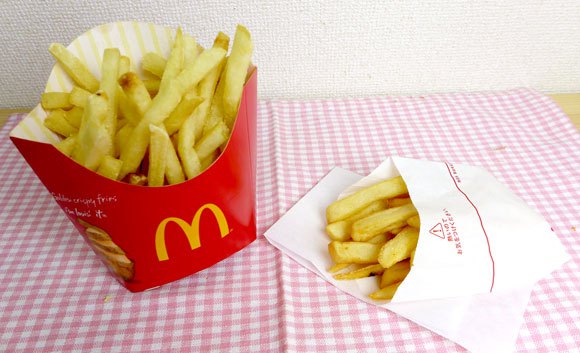
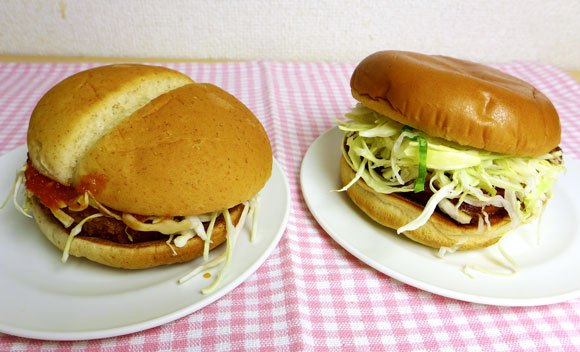
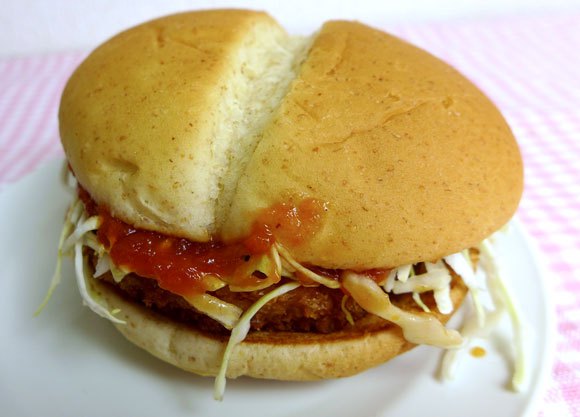
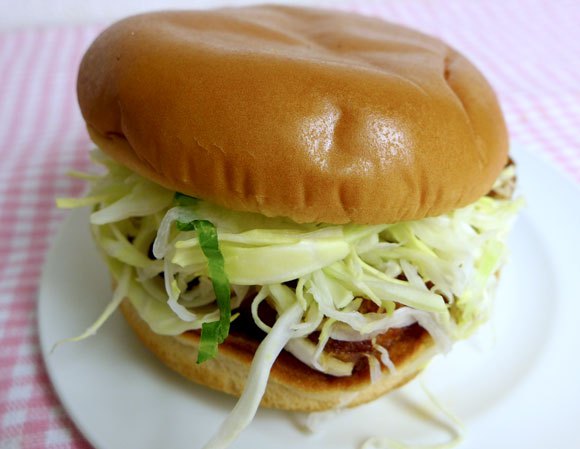
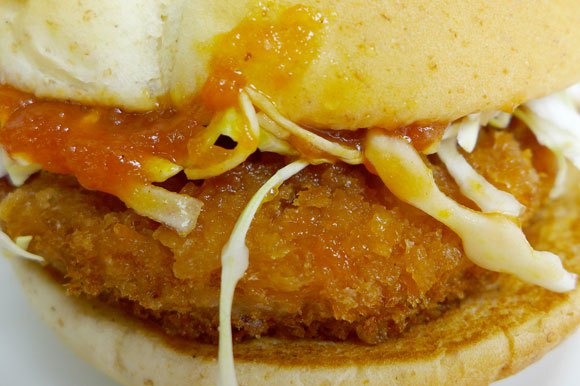
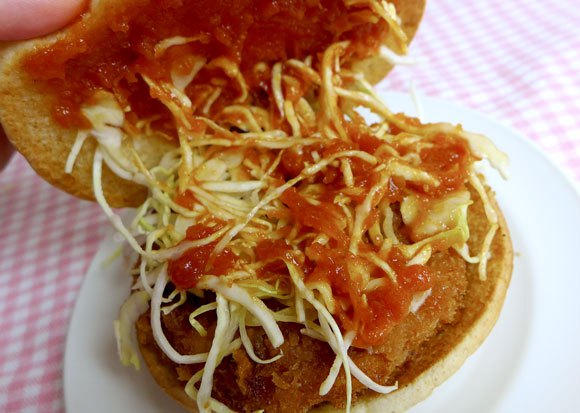
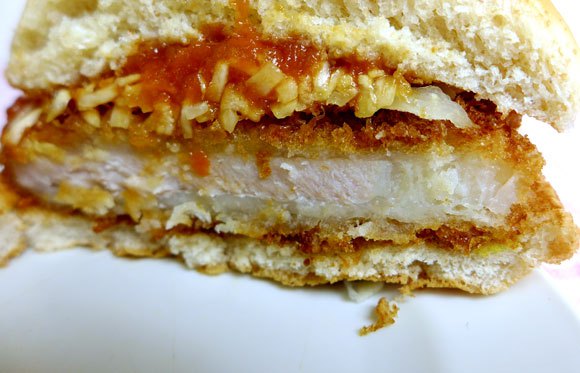
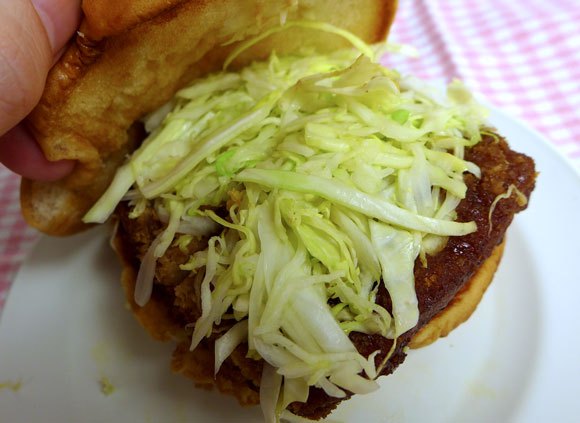

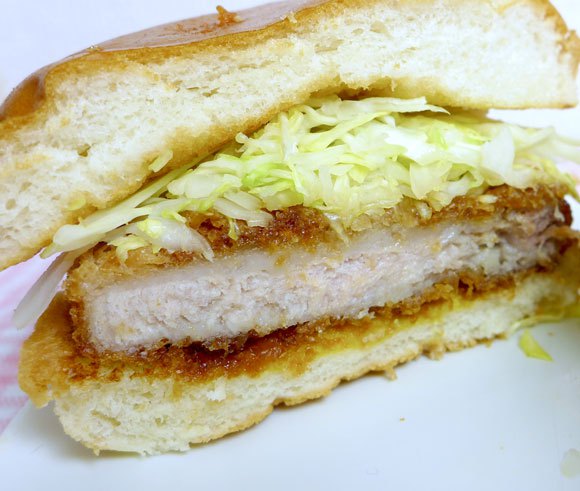
 Tonkatsu McBurger gets an upgrade and joins the regular McDonald’s Japan menu, people still upset
Tonkatsu McBurger gets an upgrade and joins the regular McDonald’s Japan menu, people still upset McDonald’s Japan adds deep-fried cheese cutlet sandwiches to its menu
McDonald’s Japan adds deep-fried cheese cutlet sandwiches to its menu Hokkaido, Osaka, and Fukuoka: Taste-testing McDonald’s oddly named Adult Regional Teriyaki burgers
Hokkaido, Osaka, and Fukuoka: Taste-testing McDonald’s oddly named Adult Regional Teriyaki burgers We combine McDonald’s and MOS Burger for forbidden deliciousness
We combine McDonald’s and MOS Burger for forbidden deliciousness Mos Burger Chimes in on McDonald’s 60 Second Service, Reminds People How Fast Mos Burger Ain’t
Mos Burger Chimes in on McDonald’s 60 Second Service, Reminds People How Fast Mos Burger Ain’t Hayao Miyazaki says Happy New Year to Studio Ghibli fans with new art for Year of the Horse
Hayao Miyazaki says Happy New Year to Studio Ghibli fans with new art for Year of the Horse On-warabimochi: A delicious Japanese dessert you should only eat with people who already love you
On-warabimochi: A delicious Japanese dessert you should only eat with people who already love you Four dirt-cheap but tasty places to grab lunch in Tokyo’s Shibuya shopping mecca
Four dirt-cheap but tasty places to grab lunch in Tokyo’s Shibuya shopping mecca Pizza Hut Japan’s hot lucky bags are perfect for a New Year’s pizza party
Pizza Hut Japan’s hot lucky bags are perfect for a New Year’s pizza party This ad for Ueno Clinic makes no sense… until you realize what the clinic specializes in【Video】
This ad for Ueno Clinic makes no sense… until you realize what the clinic specializes in【Video】 Beautiful Totoro bento box mixes classic and modern symbols of Japan
Beautiful Totoro bento box mixes classic and modern symbols of Japan Japanese osechi New Year’s meal lucky bag gives us way more than we bargained for
Japanese osechi New Year’s meal lucky bag gives us way more than we bargained for What’s in a Japan Disney Store Lucky Box? Our non-Disney fanatic finds out!
What’s in a Japan Disney Store Lucky Box? Our non-Disney fanatic finds out! We attach chemical butt-warmers to our crotches but really should know better
We attach chemical butt-warmers to our crotches but really should know better We found possibly the quietest Japanese-style hotel in Tokyo’s bustling Shinjuku district
We found possibly the quietest Japanese-style hotel in Tokyo’s bustling Shinjuku district Starbucks Japan ready to get Year of the Horse started with adorable drinkware and plushies【Pics】
Starbucks Japan ready to get Year of the Horse started with adorable drinkware and plushies【Pics】 7-Eleven Japan’s ramen-cooking robot whipped us up a bowl of noodles【Taste test】
7-Eleven Japan’s ramen-cooking robot whipped us up a bowl of noodles【Taste test】 Cyberpunk anime meets traditional culture in Ghost in the Shell gold leaf Japanese changing screens
Cyberpunk anime meets traditional culture in Ghost in the Shell gold leaf Japanese changing screens 7 great places to see Mt. Fuji from without having to climb it
7 great places to see Mt. Fuji from without having to climb it Hello Kitty Choco Egg figures are an adorable trip through three periods of Japanese pop culture【Pics】
Hello Kitty Choco Egg figures are an adorable trip through three periods of Japanese pop culture【Pics】 Japan’s otoshidama tradition of giving kids money at New Year’s gets a social welfare upgrade
Japan’s otoshidama tradition of giving kids money at New Year’s gets a social welfare upgrade Lacquerware supplier to emperor of Japan and Pokémon team up for new tableware
Lacquerware supplier to emperor of Japan and Pokémon team up for new tableware Sumo Sanrio! Hello Kitty and pals team up with Japan Sumo Association for new merch【Pics】
Sumo Sanrio! Hello Kitty and pals team up with Japan Sumo Association for new merch【Pics】 Can a dirty butthole make you filthy rich in Japan? We’re starting a New Year’s lottery experiment
Can a dirty butthole make you filthy rich in Japan? We’re starting a New Year’s lottery experiment 7-Eleven Japan starts new temporary luggage storage service in over 300 branches
7-Eleven Japan starts new temporary luggage storage service in over 300 branches Disillusionment at Tsukiji’s tourist-target prices led us to a great ramen restaurant in Tokyo
Disillusionment at Tsukiji’s tourist-target prices led us to a great ramen restaurant in Tokyo Starbucks teams up with 166-year-old Kyoto doll maker for Year of the Horse decorations【Photos】
Starbucks teams up with 166-year-old Kyoto doll maker for Year of the Horse decorations【Photos】 Tokyo considering law requiring more trash cans following litter increase in heavily touristed area
Tokyo considering law requiring more trash cans following litter increase in heavily touristed area Tokyo’s Tsukiji sushi neighborhood asks tour groups to stay away for the rest of the month
Tokyo’s Tsukiji sushi neighborhood asks tour groups to stay away for the rest of the month Nintendo’s Kirby now delivering orders at Kura Sushi restaurants, but not in Japan
Nintendo’s Kirby now delivering orders at Kura Sushi restaurants, but not in Japan Tokyo event lets you travel back in time, for free, to celebrate 100 years since Showa era start
Tokyo event lets you travel back in time, for free, to celebrate 100 years since Showa era start Sanrio theme park in Japan announces plans to expand into a Sanrio resort
Sanrio theme park in Japan announces plans to expand into a Sanrio resort Japan may add Japanese language proficiency, lifestyle classes to permanent foreign resident requirements
Japan may add Japanese language proficiency, lifestyle classes to permanent foreign resident requirements Survey asks foreign tourists what bothered them in Japan, more than half gave same answer
Survey asks foreign tourists what bothered them in Japan, more than half gave same answer Japan’s human washing machines will go on sale to general public, demos to be held in Tokyo
Japan’s human washing machines will go on sale to general public, demos to be held in Tokyo Japan’s deadliest food claims more victims, but why do people keep eating it for New Year’s?
Japan’s deadliest food claims more victims, but why do people keep eating it for New Year’s? We deeply regret going into this tunnel on our walk in the mountains of Japan
We deeply regret going into this tunnel on our walk in the mountains of Japan Studio Ghibli releases Kodama forest spirits from Princess Mononoke to light up your home
Studio Ghibli releases Kodama forest spirits from Princess Mononoke to light up your home Major Japanese hotel chain says reservations via overseas booking sites may not be valid
Major Japanese hotel chain says reservations via overseas booking sites may not be valid Put sesame oil in your coffee? Japanese maker says it’s the best way to start your day【Taste test】
Put sesame oil in your coffee? Japanese maker says it’s the best way to start your day【Taste test】 No more using real katana for tourism activities, Japan’s National Police Agency says
No more using real katana for tourism activities, Japan’s National Police Agency says Starbucks Japan reveals new sakura drinkware collection, inspired by evening cherry blossoms
Starbucks Japan reveals new sakura drinkware collection, inspired by evening cherry blossoms Updated cherry blossom forecast shows extra-long sakura season for Japan this year
Updated cherry blossom forecast shows extra-long sakura season for Japan this year McDonald’s Japan adds first-ever shrimp rice burger to menu in gohan sandwich expansion
McDonald’s Japan adds first-ever shrimp rice burger to menu in gohan sandwich expansion Godzilla vs McDonald’s! King of monsters takes on fast food king’s new Godzilla Burgers【Video】
Godzilla vs McDonald’s! King of monsters takes on fast food king’s new Godzilla Burgers【Video】 Lotteria unveils its first rice burgers, but how do they compare to Mos Burger and McDonald’s?
Lotteria unveils its first rice burgers, but how do they compare to Mos Burger and McDonald’s? McDonald’s Japan’s new kalbi koshihikari rice burger and its friends only come out after sundown
McDonald’s Japan’s new kalbi koshihikari rice burger and its friends only come out after sundown McDonald’s Japan’s Gurakoro burgers, like a cup of hot soup in sandwich form, return this month!
McDonald’s Japan’s Gurakoro burgers, like a cup of hot soup in sandwich form, return this month! Dragon Quest Burgers and Slime drinks are coming to McDonald’s Japan【Video】
Dragon Quest Burgers and Slime drinks are coming to McDonald’s Japan【Video】 Tsukimi burger season heats up as McDonald’s Japan unveils new moon-viewing burger lineup【Pics】
Tsukimi burger season heats up as McDonald’s Japan unveils new moon-viewing burger lineup【Pics】 McDonald’s Japan celebrates Halloween by joining the dark burger revolution
McDonald’s Japan celebrates Halloween by joining the dark burger revolution Katsudon vs. tonkatsu vs. katsu sandwich – What’s the best way to eat pork cutlet in Japan?
Katsudon vs. tonkatsu vs. katsu sandwich – What’s the best way to eat pork cutlet in Japan? McDonald’s Japan unveils moon-viewing sukiyaki burgers and sweets for tsukimi season
McDonald’s Japan unveils moon-viewing sukiyaki burgers and sweets for tsukimi season Japanese-style curry rice coming to McDonald’s Japan? Mysterious tweet has fans’ fingers crossed
Japanese-style curry rice coming to McDonald’s Japan? Mysterious tweet has fans’ fingers crossed We fall in (and out) of love with McDonald’s new Diner Double Beef burger
We fall in (and out) of love with McDonald’s new Diner Double Beef burger McDonald’s Japan asks that you please be careful with its new extra-spicy rice burger
McDonald’s Japan asks that you please be careful with its new extra-spicy rice burger McDonald’s Japan expands rice burger menu with first-ever rice fish burger, two more options
McDonald’s Japan expands rice burger menu with first-ever rice fish burger, two more options We try McDonald’s Japan’s new teriyaki burgers
We try McDonald’s Japan’s new teriyaki burgers
Leave a Reply